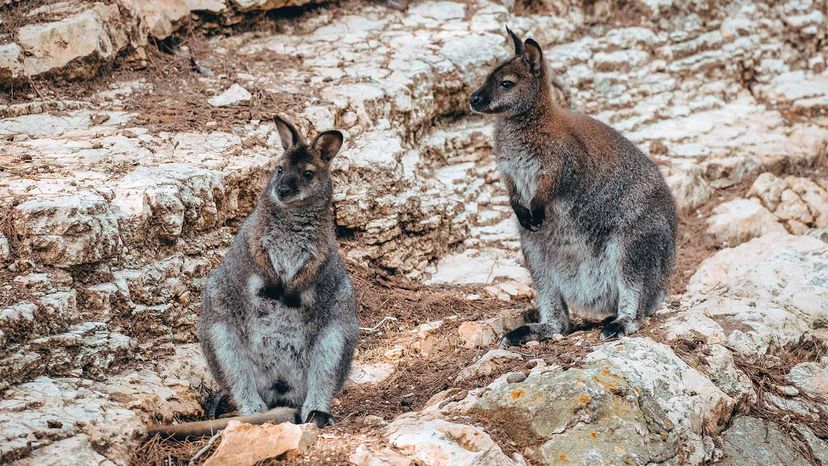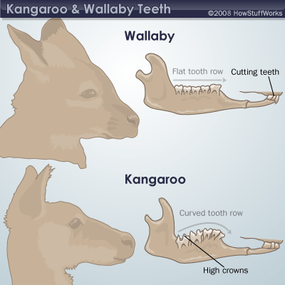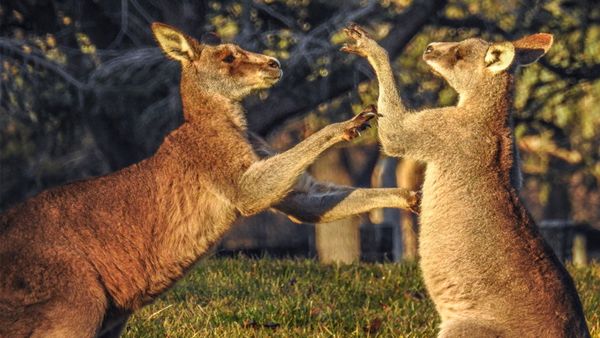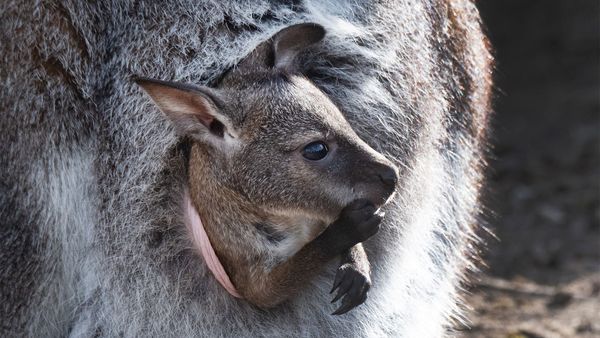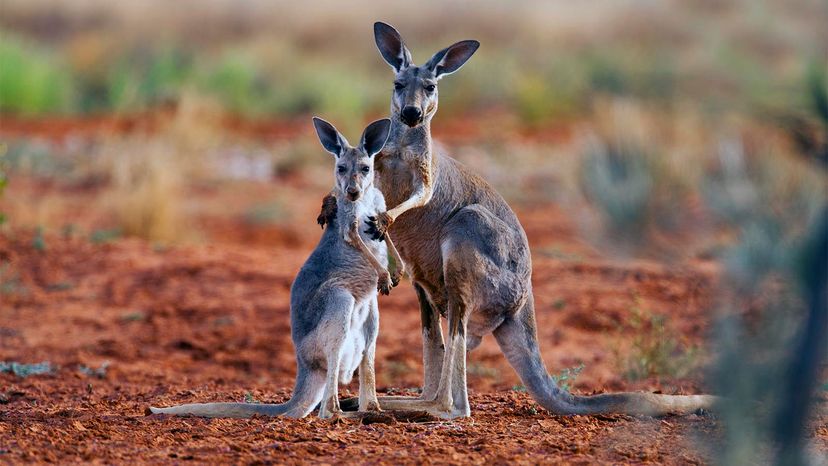
If you're like most people, when you think of kangaroos and wallabies, you think of Australia. After all, the pouched marsupials with prominent hind legs are indigenous to the land Down Under. Or maybe you think of your favorite marsupial characters, like Kanga and Roo, friends of Christopher Robin and Winnie the Pooh.
Regardless of your associations, surely, you've wondered what the difference is between a kangaroo (Macropodidae) and a wallaby (Notamacropus). They look so much alike. They're both marsupials, meaning they're born as an embryo and are developed, carried and suckled in a pouch on the mother's belly. And scientists have even grouped them into the same order (Diprotodontia) and family (Macropodidae).
Advertisement
So what are the main distinctions between these two and how can you tell?
First, size. As a rule, kangaroos are much taller than wallabies. Kangaroos have a lot of length between their ankles and knees, which makes their legs seem out of proportion to their bodies. But there's a reason for that. Their legs are built for speed and hopping on open terrain. Kangaroos can grow as tall as 8 feet (2.4 meters) and weigh as much as 200 pounds (90 kilograms).
Wallabies, on the other hand, have more compact legs that are designed for agility in forested areas. Although there are many different species of wallabies, they tend to weigh no more than 45 pounds (20 kilograms) and rarely getting any taller than 3.2 feet (1 meter), excluding their tails.
Another easy way to identify a wallaby from a kangaroo is their color. A wallaby's coat is usually brighter with two to three different color variations. For example, the unfortunately named red-necked wallaby has a grayish belly with red markings on its shoulders. The kangaroo's coat is usually less splashy and more uniform, with muted colors of either brown or gray.
For a more scientific way to tell the two animals apart, you'll have to get these guys to open their mouths and say "Aaaah."
Advertisement
